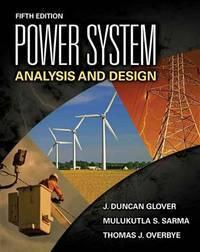Throughout most of the (20^{text {th }})-century, electric utility companies built increasingly larger generation plants, primarily hydro
Question:
Throughout most of the \(20^{\text {th }}\)-century, electric utility companies built increasingly larger generation plants, primarily hydro or thermal (using coal, gas, oil, or nuclear fuel). At the end of the twentieth century, following the ongoing deregulation of the electric utility industry with increased competition in the United States and in other countries, smaller generation sources that connect directly to distribution systems have emerged.
Distributed energy resources are sources of energy including generation and storage devices that are located near local loads. Distributed generation sources include renewable technologies (including geothermal, ocean tides, solar and wind) and nonrenewable technologies (including internal combustion engines, combustion turbines, combined cycle, microturbines, and fuel cells). Microgrids are systems that have distributed energy resources and associated loads that can form intentional islands in distribution systems. The following article describes the benefits of microgrids and several microgrid technologies under development in the United States and other countries.
Questions:-
A. What is a microgrid?
B. What is an island in an interconnected power system?
C. Why is a microgrid designed to be able to operate in both grid-connected and standalone modes?
D. When operating in the stand-alone mode, what control features should be associated with a microgrid?
Step by Step Answer:

Power System Analysis And Design
ISBN: 9781111425777
5th Edition
Authors: J Duncan Glover, Mulukutla S Sarma, Thomas Overbye





